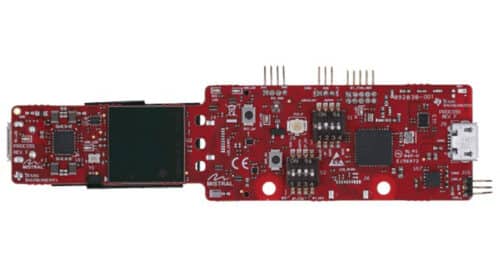The reference design enables in-cabin occupant detection, offering solutions for airbag deployment, child detection, and more. Discover more inside!

The TIDEP-01023 reference design from Texas Instruments (TI) enables design engineers to develop and implement in-cabin vehicle occupant detection systems. With the AWR6843AOP sensor, based on 60-GHz mmWave RF-CMOS technology, this design provides a single-chip solution that integrates a radar front end, ARM microcontroller (MCU), and DSP core. This allows engineers to build radar systems for in-cabin sensing applications, such as airbag deployment, climate control, and detecting children or disabled individuals left behind in vehicles.
The reference design supports a wide azimuth and elevation field of view (±60°) and a close-range sensor configuration (up to 3 meters), enabling detection and localization of life forms across multiple regions within a vehicle. Engineers can use the provided algorithms to generate azimuth-range and elevation-range heat maps and implement detection and decision-making processes. The design allows for sensor placement in locations such as the overhead console, near the rear-view mirror, in the headliner, B/C pillars, or on seats. This flexibility enables engineers to adapt the system to use cases, including child presence detection, seat belt warnings, intruder detection, driver vital sign monitoring, and gesture recognition.
The Data Path Manager (DPM) manages processing on the device, which coordinates tasks across the R4F and DSP. The group tracker runs on the Cortex R4F as a separate task, encapsulated in a DPU for initialization and configuration by the DPM. During runtime, the group tracker operates in its task, which waits for a semaphore to be released once the point cloud is received and stored from the DSP. This allows the Cortex R4F to transmit data via UART or process ADC data through the HWA while the tracker continues to run using the point cloud from the previous frame.
Designed for overhead roof mounting, the AWR6843AOP sensor can monitor two rows of seats with an azimuth and elevation field of view of 120 degrees. The sensor’s form factor and capabilities make it a choice for low-power, self-monitoring radar systems, providing precision in detecting occupants and other in-cabin activities.
To support development, the mmWave Software Development Kit (SDK) provides engineers with tools and demonstration applications to integrate the AWR6843AOP sensor into custom mmWave solutions. The SDK offers pre-built components, allowing engineers to focus on their application needs. With resources such as hardware lists, schematics, and software, this reference design provides a path to creating vehicle occupant detection products.
TI has tested this reference design. It comes with a bill of materials (BOM), schematics, assembly drawing, printed circuit board (PCB) layout, and more. The company’s website has additional data about the reference design. To read more about this reference design, click here.








